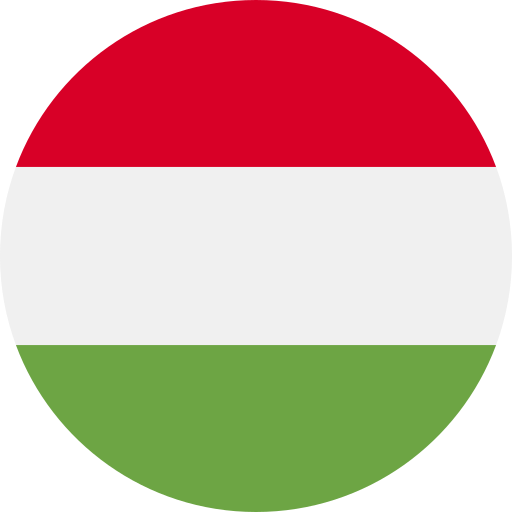Key Takeaways
- Unique Language Family: Hungarian, or Magyar, belongs to the Uralic language family, distinguishing it from the predominantly Indo-European languages in Europe.
- Agglutinative Structure: Its agglutinative grammar allows for flexible word formation through prefixes and suffixes, enabling complex meanings without additional words.
- Phonetic Clarity: The phonetic nature of Hungarian simplifies pronunciation as each letter consistently corresponds to specific sounds, enhancing accessibility for learners.
- Lexical Borrowing: Due to historical interactions, Hungarian has absorbed vocabulary from Turkish, German, Slavic languages, and Latin, enriching its lexicon with terms like „kávé“ (coffee).
- Influence on Neighbors: Hungarian significantly impacts neighboring languages such as Romanian and Slovak through lexical borrowing and grammatical influence, showcasing cultural exchanges over centuries.
- Contemporary Relevance: The global diaspora of Hungarian speakers continues to shape linguistic trends today by integrating Hungarian vocabulary into various local dialects worldwide.
Have you ever wondered how a small language like Hungarian can leave a big mark on world languages? While it may not be as widely spoken as others, its unique structure and vocabulary have influenced various tongues across Europe and beyond.
Overview of Hungarian Language
Hungarian, known as Magyar, belongs to the Uralic language family. It’s distinct from most European languages, which are primarily Indo-European. With around 13 million speakers, Hungarian is largely concentrated in Hungary and parts of neighboring countries like Romania and Slovakia.
Hungarian features a unique agglutinative structure. This means it forms words by stringing together various prefixes and suffixes, allowing for expressive inflection. For example, the word „ház“ (house) can transform into „házaimé“ (my houses) through different affixes. Such flexibility contributes to its rich vocabulary and intricate grammar.
The language’s phonetic nature makes pronunciation straightforward for learners. Each letter corresponds consistently with specific sounds. This clarity contrasts sharply with many other languages that have irregularities in spelling and pronunciation.
Additionally, Hungarian has absorbed vocabulary from numerous languages over centuries due to historical interactions. Words from Turkish, German, Slavic languages, and Latin enrich its lexicon. Examples include „kávé“ (coffee) from Turkish and „ablak“ (window) from Slavic roots.
As you explore the impact of Hungarian on world languages, you’ll find that its unique characteristics offer fascinating insights into linguistic diversity beyond spoken words alone.
Historical Context
Hungarian, known as Magyar, has a rich historical context that significantly impacts its interactions with other languages. Originating from the Uralic language family, Hungarian stands apart from the predominantly Indo-European languages in Europe. Its development over centuries reflects a blend of influences shaped by migrations, conquests, and cultural exchanges.
Language Evolution
Hungarian’s evolution showcases how it adapted to various sociolinguistic environments. Early on, it absorbed elements from Turkic and Slavic languages due to historical interactions with neighboring cultures. This linguistic exchange resulted in an enriched vocabulary that incorporates words like „kávé“ (coffee) and „ablak“ (window). Over time, Hungarian maintained its distinctive agglutinative structure while integrating foreign terms seamlessly into everyday use.
Influence on Neighboring Languages
Hungarian’s influence extends beyond its borders, impacting neighboring languages such as Romanian and Slovak. This influence often manifests through lexical borrowing and phonetic adaptations. For instance, Romanian includes numerous Hungarian loanwords due to geographical proximity and historical connections. Additionally, Slovak speakers may adopt Hungarian expressions or grammatical structures in informal contexts.
Through these linguistic exchanges, you can observe how Hungarian contributes to a broader multilingual landscape in Central Europe. The interplay between Hungarian and surrounding languages creates a vibrant tapestry of communication that enriches both speakers‘ experiences and the region’s cultural identity.
Key Linguistic Features
Hungarian’s unique characteristics significantly influence its interaction with other languages. Understanding these features reveals the depth of its impact on global linguistic landscapes.
Phonetics and Phonology
Hungarian phonetics stands out due to its clear vowel harmony, where vowels within a word harmonize in terms of frontness or backness. This feature simplifies pronunciation for speakers, making it relatively straightforward compared to other languages. Each letter corresponds consistently to specific sounds, which eliminates ambiguity in pronunciation. For instance, the Hungarian „ö“ is distinct and indicates a particular sound not commonly found in many European languages.
Grammar and Syntax
The agglutinative nature of Hungarian grammar allows you to create complex meanings through prefixes and suffixes attached to root words. This structure provides flexibility in sentence formation, enabling precise expression without needing additional words. Sentence order can vary depending on emphasis; for example, placing the object at the beginning highlights that element. Such syntactic variability enriches communication by allowing speakers to convey nuances effectively.
Vocabulary and Semantics
Hungarian vocabulary showcases extensive borrowing from various languages like Turkish, German, and Slavic tongues due to historical interactions. Words such as „kávé“ (coffee) illustrate this integration while expanding semantic fields across cultures. Additionally, Hungarian often uses compound words that describe complex ideas succinctly—an efficient way of conveying meaning without lengthy explanations.
These key linguistic features help explain how Hungarian influences neighboring languages and contributes uniquely to linguistic diversity across Europe.
Case Studies of Influence
Hungarian has significantly influenced several languages, particularly in neighboring regions. This section explores its impact on Romanian, Slovak, and Serbian.
Romanian Language
Hungarian’s influence on Romanian is evident through lexical borrowing and phonetic adaptations. Approximately 1,500 Hungarian words have found their way into the Romanian lexicon, especially in areas like agriculture and everyday life. Terms such as „băiat“ (boy) and „casa“ (house) showcase this borrowing. Furthermore, the geographical proximity between Hungary and Romania has facilitated cultural exchange, enriching both languages over centuries.
Slovak Language
Slovak also reflects Hungarian linguistic influence through borrowed vocabulary and structural elements. Around 300 Hungarian terms appear in Slovak speech. Words like „kávé“ (coffee) highlight this connection. Additionally, the agglutinative nature of both languages allows for shared grammatical structures, making communication smoother across borders.
Serbian Language
Serbian displays a smaller yet notable influence from Hungarian primarily through vocabulary integration. The Hungarian language contributed around 200 words to Serbian. Examples include “šljivovica” (plum brandy), which emphasizes cultural exchanges tied to local traditions. The interaction between these two languages illustrates how historical ties have shaped their development over time.
These case studies demonstrate how Hungarian’s unique characteristics enhance linguistic diversity in neighboring countries while fostering mutual understanding among speakers.
Contemporary Relevance
Hungarian’s relevance today extends beyond its borders, influencing various languages and cultures around the world. Its unique features continue to shape linguistic interactions in contemporary settings.
Hungarian Diaspora
The Hungarian diaspora significantly contributes to the language’s contemporary impact. Communities of Hungarian speakers exist across Europe, North America, and beyond. These communities maintain cultural ties through language, enriching local linguistics with Hungarian terms and expressions. For example, cities like Toronto and Chicago host vibrant Hungarian populations that influence regional dialects. The integration of Hungarian vocabulary into these areas reflects a blend of cultures while preserving linguistic heritage.
Global Linguistic Trends
In an increasingly interconnected world, global linguistic trends showcase how languages interact with one another. As people migrate and technology advances, languages borrow from each other more than ever before. In this context, Hungarian stands out for its distinctive agglutinative structure and phonetic clarity. This makes it an attractive source for lexical borrowing among neighboring languages as well as those further afield.
Moreover, the rise of digital communication amplifies these trends. Social media platforms allow speakers to share idioms or slang from their native tongues widely, further blending linguistic boundaries. This phenomenon enhances mutual understanding between diverse groups while encouraging multilingualism.
Overall, exploring the contemporary relevance of Hungarian highlights its role in today’s globalized society—connecting communities through shared language while celebrating cultural diversity.
Conclusion
Hungarian’s impact on world languages is a testament to its unique structure and rich history. As you explore the linguistic landscape shaped by this fascinating language, you’ll discover how its features have fostered connections across cultures. The integration of Hungarian vocabulary into neighboring languages illustrates the ongoing exchange of ideas and expressions.
In an increasingly globalized world, understanding these influences enhances your appreciation for both Hungarian and the diverse languages it interacts with. By recognizing the role of Hungarian in shaping linguistic diversity, you’re not just learning about a language but also embracing the cultural tapestry that binds us all together.
Frequently Asked Questions
What is the Hungarian language and where is it spoken?
Hungarian, also known as Magyar, is a Uralic language primarily spoken in Hungary and parts of Romania and Slovakia. It has around 13 million speakers and stands out in Europe due to its unique structure compared to predominantly Indo-European languages.
How does Hungarian influence other languages?
Hungarian significantly impacts neighboring languages like Romanian, Slovak, and Serbian through lexical borrowing. Approximately 1,500 Hungarian words have been adopted into Romanian, while Slovak has around 300 borrowed terms. This integration enriches the linguistic diversity of these countries.
What are key features of the Hungarian language?
Hungarian features an agglutinative structure that allows for expressive inflection by combining prefixes and suffixes. Its phonetic nature ensures straightforward pronunciation, with consistent sound-letter correspondence. Additionally, it exhibits clear vowel harmony and complex sentence structures.
How has Hungarian evolved over time?
Hungarian has evolved by integrating elements from Turkic and Slavic languages throughout history due to migrations and cultural exchanges. Despite these influences, it retains its distinctive grammatical structure while enriching its vocabulary through borrowings from various languages.
Why is understanding Hungarian important today?
Understanding Hungarian highlights cultural ties within communities globally, particularly among diaspora populations in cities like Toronto and Chicago. As migration increases, recognizing linguistic features fosters mutual understanding while celebrating cultural diversity in an interconnected world.







